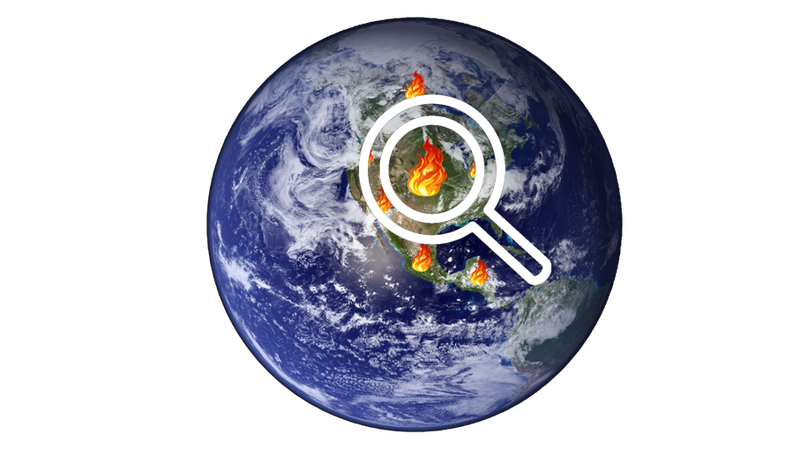SlooooowPokers | And YOU can Help Fight Fires!
The Challenge | And YOU can Help Fight Fires!
FireFighters
Build a fire-monitoring and crowdsourcing tool that will allow local fire managers to respond to wildfires.

Background:
Fires are increasing across landscapes throughout the world due to increased drought, increased temperatures, and human-driven changes (e.g., deforestation). When the weather is extreme, the fires are extreme, often spreading beyond countries’ abilities to fight them. Fires can move quickly though landscapes and communities, causing immediate damage and extreme health risks due to smoke pollution.
Often, fires are so big that it is impossible to: (1) see the best paths out; (2) see the best paths available for rescue or fire management vehicles to enter; and (3) estimate where post-fire effects will be the strongest (debris flows, landslides). However, satellite data can see the entire landscape and help with valuable information for those who need it most!
Develop a tool that combines satellite data with crowd-sourced data from people on the ground near areas of concern, to help firefighters identify:
- Where a fire has started
- Where a fire is spreading or might spread
- Best paths for rescue and fire management teams to enter and navigate the areas of concern
- Best paths to help people evacuate
Take your tool a step further and incorporate short-term and long-term environmental data, such as regional weather systems, rainfall, etc., to predict post-wildfire hazardous events, including:
- Spread of ash and smoke
- Flooding
- Landslides
This challenge addresses the following Sustainable Development Goals (SDGs), adopted by the United Nations General Assembly to engage all countries and all stakeholders in a collaborative partnership. The SDGs aim to build a better future for all people by achieving sustainable development in three dimensions – economic, social, and environmental – in the spirit of strengthened global solidarity:
Goal 11.5: By 2030, significantly reduce the number of deaths and the number of people affected and substantially decrease direct economic losses relative to global gross domestic product caused by disasters, including water-related disasters, with a focus on protecting the poor and people in vulnerable situations.
- Determination of local fires on the ground with the help of satellite data.
- Monitoring and tracking of new fires.
- Forecasting the progress of a fire.
- Gives users information about the ongoing fire if there is one near the users.
- Provides an opportunity to share information about the fire.
- Android Application FireFighters
- WEB Client FireFighters
- Source for Android Application
SpaceApps is a NASA incubator innovation program.